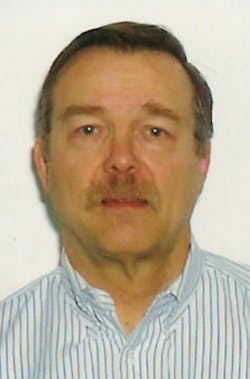Congratulations to DHS & TSA. Sort Of….
In its annual analysis of the Best Places To Work, based on an OMB survey of more than 498,000 government employees from200 Federal organizations, the Partnership for Public Service along with Deloitte reports that the Department of Homeland Security has improved a significant 6.2% over last year. The caveat: they are still in last place among the 18 large Federal agencies, lurking at 52% just behind the Departments of the Air Force (60.7) and Veterans Affairs (56.1). Out of 150 sub-agencies across the government spectrum, the Transportation Security Administration is #148 - third from the bottom (up 6.4 to 41.9), edging out the Dept. Of Education’s Office of Civil Rights (41.9) and the US Secret Service (39.5), pulling down DHS averages even more.
The survey asks their opinions about such things as effective leadership of management and supervisors, mission-match of skills, pay, teamwork, training, diversity, among others. The rankings also alert federal leaders to signs of trouble in managing its employees. Again, this is not necessarily a reflection on the quality of their work; it’s an employee’s view of the quality of their work-place environment. Nonetheless, after ten years of consistently holding down the bottom end of the ladder, one might wonder why they can’t seem to step on that next rung up.
One theory, of course, is the nature of the job. Everybody loves to hate TSA, which is the only face most travelers ever see, and typically at the most stressful portion of their journey. It has a total of about 57,600 employees, 42,000 of which (73%) are screeners, presumably including some local supervisory personnel. That works out to roughly just a tad more than one non-screener agency person for every three front line screeners. That includes the entire administrative infrastructure from HR to training to payroll, policy and planning to enforcement and procurement and R&D to testing and interagency liaison… and I know I’m missing some. Frankly, I’m not sure if that’s an appropriate ratio in an agency this size – the entire report tries to answer that. The survey is also not clear as to the ratio of interviews of management vs. worker bees, but even if we charitably assume a proportionate mix, the word is apparently not reaching the top rung that there’s something wrong when it’s considered an improvement when 59% of your people aren’t happy working there. A self-approval rate of 41.9% is pretty grim.
There’s another theory that goes like this: Since its inception following 9/11, TSA has had 13 Administrators in 16 years, 6 of whom were “Acting” during various transitional periods (3 during the same year). New Administrators bring new staff, new ideas, new priorities, new strengths, weaknesses and misconceptions, and new re-organizations of which I’ve lost count… my agency organization chart is a bunch of yellow sticky notes on the wall, so I can more easily change them around every few days as the department heads and their responsibilities migrate throughout the chain of command. Point One: it’s very difficult to do a good job, or even to make a reasonable decision, when there is an underlying fear that the current bosses don’t understand all the hard-learned nuances, and the next bosses – coming soon – will often have a different set of priorities anyway, so let’s not rock the boat. Point Two: that’s a pretty common human nature response to put up an 8-foot protective fence around your job. Good luck, Admiral; it needs some high-level fixing. You’re going to need a 10-foot ladder
About the Author
Art Kosatka
CEO
Art Kosatka is CEO of TranSecure, an aviation consultancy in Virginia. He'll respond to questions or comments at [email protected].

